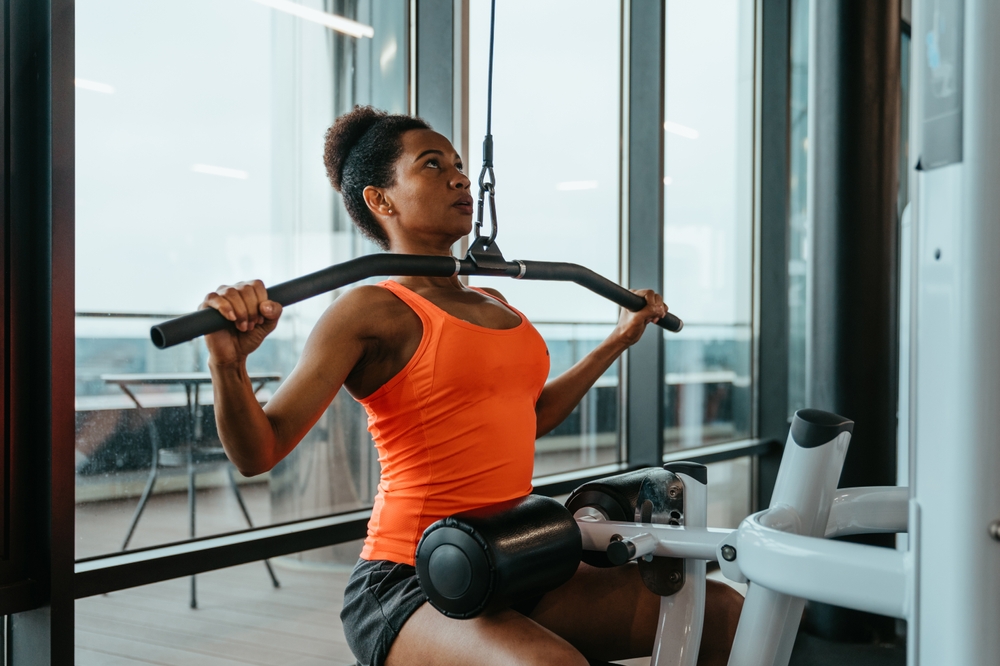The fitness world has rediscovered pull-ups as a foundational movement for achieving total body transformation. This versatile exercise, once viewed as a basic strength test, is now an integral component of modern fitness programming. The pull-up offers unparalleled benefits, ranging from enhanced strength development to improved functional fitness. This comprehensive analysis explores why pull-ups have made a resurgence in fitness routines and how they contribute to physical growth and athletic performance.
Understanding biomechanics
Pull-ups are more than just a strength test; they represent a unique blend of muscular engagement and neurological coordination. Unlike isolated movements that target individual muscle groups, pull-ups demand the activation of multiple muscle groups working in unison. The exercise challenges the body’s proprioceptive systems—those responsible for our sense of spatial awareness and balance—therefore creating a powerful stimulus for both strength and skill development.
Muscular engagement analysis
Recent research into the biomechanics of pull-ups highlights their efficiency in targeting large muscle groups. When executed properly, pull-ups engage muscles from the upper body to the core, creating a balanced workout. Understanding these engagement patterns can guide individuals looking to optimize their technique and maximize the benefits of each repetition.
The primary muscle groups activated during a pull-up include the latissimus dorsi, biceps brachii, posterior deltoid, and lower trapezius. These muscles work together to move the body upward, with the latissimus dorsi being the most engaged. The biceps assist in the pulling motion, while the posterior deltoid and lower trapezius contribute to stabilizing the shoulders and upper back.
Neuromuscular benefits
The complex nature of pull-ups leads to several neurological benefits, as the body learns to coordinate various muscle groups. This process enhances motor unit recruitment, improves intermuscular coordination, and increases nervous system efficiency. Over time, these adaptations contribute to better movement patterns and increased strength, not just in pull-ups but also in other exercises and everyday activities.
As the body becomes more efficient at performing pull-ups, the nervous system becomes adept at activating the right motor units at the right time, leading to enhanced performance in other physical activities. Practicing pull-ups also helps improve overall movement pattern recognition, making complex motions more fluid and controlled.
Performance optimization
Mastering the pull-up requires attention to several technical details that contribute to overall performance. Grip width, scapular positioning, core engagement, and breathing patterns all play a significant role in ensuring a proper pull-up execution. Optimizing grip width helps target the muscles more effectively and reduces strain on the shoulders. Proper scapular positioning ensures correct muscle activation, while core engagement helps maintain stability during the movement.
Breathing is another often overlooked aspect of pull-up technique. Establishing a consistent breathing pattern—exhaling during the upward movement and inhaling during the descent—supports endurance and ensures the muscles remain adequately oxygenated throughout the set.
Progressive development
Improving at pull-ups requires a systematic approach that focuses on incremental progress. The path to mastering pull-ups begins with foundational exercises that help build strength and technique. Beginners can start by mastering the dead hang, which builds grip strength and familiarizes the body with the movement. Scapular pull-ups, where the shoulder blades are engaged first, help lay the groundwork for full pull-ups by teaching proper muscle activation.
As strength increases, individuals can focus on negative repetitions—slowly lowering the body from the top position—to build control and range of motion. Eventually, the goal is to complete full pull-ups, progressing from a dead hang to the chin-over-bar position.
Variation implementation
Once the basic pull-up is mastered, incorporating variations can help prevent plateaus and target specific fitness goals. Different pull-up variations, such as wide-grip or chest-to-bar pull-ups, allow individuals to focus on different muscle groups. L-sit pull-ups engage the core while performing the movement, and adding weight to the pull-up further challenges strength and endurance.
Incorporating these variations into a training routine can help individuals continue progressing and avoid stagnation. By adjusting grip positions or increasing resistance, the pull-up becomes a more dynamic and versatile exercise that can target multiple fitness goals.
Recovery considerations
Pull-ups are an intense exercise, and like any demanding movement, they require proper recovery to maximize gains and prevent overtraining. Balancing frequency, volume, and intensity is essential to ensure adequate rest for the muscles. Recovery strategies include managing training frequency to allow muscles time to recover, gradually increasing the volume of pull-ups performed, and modulating intensity to avoid overloading the body.
Incorporating mobility work, particularly for the shoulders, wrists, and elbows, is also essential to prevent stiffness and maintain joint health. Stretching and foam rolling can help maintain flexibility and reduce the risk of injury.
Common obstacles
While pull-ups are a highly effective exercise, they do present several common challenges. Grip strength is often a limiting factor, especially for beginners, as holding onto the bar for extended periods can be difficult. Shoulder mobility restrictions can also hinder movement, preventing individuals from reaching the full range of motion.
A weak core can also make the exercise more difficult, as stabilizing the body during the pull-up requires a significant amount of core strength. Mental barriers, such as self-doubt or fear of failure, can also prevent individuals from attempting pull-ups or pushing through tough sets.
Programming strategies
To incorporate pull-ups effectively into a fitness program, a structured approach is required. Training frequency should be optimized to allow for adequate recovery between sessions. Pull-ups can be performed 2-3 times per week, with rest days in between to ensure muscle recovery.
Volume should be progressively increased as strength develops, with gradual increments in the number of sets and repetitions. Intensity can be adjusted by incorporating more challenging variations or adding weights to the movement. It’s also important to schedule deload periods to prevent burnout and allow the body to recover from intense training.
Pull-ups are a powerful exercise that can transform not only the upper body but also overall functional fitness. Mastering this foundational movement requires consistency, focus on technique, and a gradual progression. By implementing the right strategies for performance optimization and recovery, anyone can build strength, improve fitness, and reap the full benefits of this timeless exercise.














